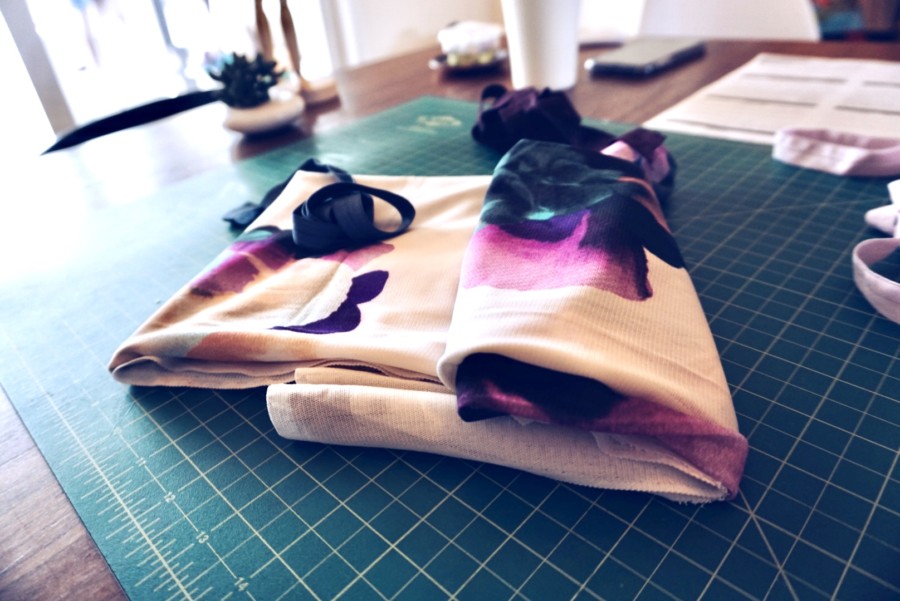Power Mesh fabric is a common fabric used in clothing that needs to stretch and move with the body. It is a slippery fabric that requires a bit of technique and practice to sew correctly. In this tutorial we will focus on how to sew power mesh fabric for lingerie such as a a pair of underwear.
This post contains affiliate links. When you click and make a purchase from these links, we might get a commission. It doesn’t cost you anything extra!
How to Sew Power Mesh Fabric?
- Prewash your power mesh fabric using the normal cycle on your washing machine and cold water. Line dry or tumble dry low if you are in a hurry.
- Transfer your paper pattern markings onto your power mesh fabric using silk pins, fabric pen, pattern weights or tailor’s chalk.
- Use a self-healing cutting mat and rotary cutter to cut out your pattern. These tools are ideal for slippery fabrics such as power mesh fabrics.
- Sew your fabric using a 3-step zigzag stitch on a regular sewing machine or a serger sewing machine. Go slow and watch for snagging or puckering.
Now that we had a quick run through of how to sew power mesh fabric let’s learn a little more about this versatile fabric. Then we will dive into a detailed step-by-step tutorial on how to sew power mesh fabric specifically for lingerie but the same techniques should apply to other forms of clothing that use this fabric.
What is Power Mesh Fabric?
Power mesh is a firm fabric ideal for compression garments such as active wear, dance wear, swimwear, medical products, and bra making and lingerie as it conforms to the natural contours of your body. Power mesh is a sheer fabric that is also great for lining compression garments. It is smooth to the touch and comes in different weights. Power mesh can be very lightweight, lightweight, medium weight or heavy. It is often measured by grams per square meter.
What is power mesh used for?
Power mesh fabric can be used for any garment that requires give, movement and breathability. It conforms to the natural contours of the body and has an element of compression favored for clothing designed for physical activity. One of the most common uses of power mesh fabric is to line the interior of swimwear. Turn your bathing suit or swim trunks inside out and you will find a lightweight mesh fabric that doesn’t absorb too much water and is still comfortable to the touch when wet. These properties are what make power mesh great for lingerie, compression specific garments, active wear, dance wear and any other garment that is designed to keep the individual comfortable while performing physical activity.
What is power mesh made of?
Power mesh fabric is made of nylon and spandex. It is a smooth, sheer fabric that comes in a variety of weights. These weights alter the amount of compression this fabric will impose on the body so keep this in mind when choosing the correct pattern size. Lighter weight power mesh fabrics are closer to your original pattern size while heavier weight power mesh fabric will be tighter therefore your pattern will need to be adjusted to a larger size. This is extremely important because heavier power mesh does not have as much give and will not contour to the body as well as lighter weight power mesh. If you do not adjust your size then your garment will likely turn out too small. Patterns that require a stretch fabric typically indicate the fabric stretch their pattern was designed for as a percentage and the intended fabric use. Be cognizant of this when choosing your power mesh fabric.
Garments that use Power Mesh
Lingerie
In regards to lingerie, power mesh is often used for the bra band also referred to as the bra band wings. It is a great choice for bra making because of its great recovery characteristics and it comes in lightweight varieties while maintaining breathability. These are both necessary characteristics when selecting fabric for bra making.
Active wear
Not only is power mesh for an everyday bra but it is also great for lining a sports bra or adding decorative elements to your pattern. Power mesh conforms to the natural contours of your body which lends itself to being very comfortable for active women. You can easily use the same power mesh to make matching sportswear for your sports bra such as leggings, shorts and tops.
Dance wear
You will often see power mesh used on garments for dancers in areas such as ice skating, cheerleading, and gymnastics. Dancers often chose this fabric for its durability and lightweight properties which allow them to move without feeling constricted or confined by their garment.
Swimwear
Power mesh is also common in swimwear. It is often used to line swimsuits but can be used as a decorative element as well. It can even be used as a swimsuit cover-up for it’s sheer characteristics and breathability making it comfortable in warmer climates.
Compression Garments
Power mesh is also used for compression garments or shapewear because of its 4 way stretch properties and smooth finish. It smooths out the silhouette when worn beneath the clothing in a flattering manner because it provides contouring to the body’s shape. The characteristic of smoothing out the natural contours makes it great as an undergarment. You will often see power mesh used in figure control garments such as control-top pantyhose and control slips. Due to its breathability it is perfect for this use as it does not retain sweat/perspiration.
Types of Power Mesh Fabric
In general, power mesh is a nylon and spandex fabric with 2-way or 4-way stretch. It is sheer but comes in a range of weights and offers great recovery. However, there are other similar mesh fabrics that are used for the garments mentioned above. These mesh fabrics include the following:
- Power Net which has higher compression and durability which makes it better suited for sportswear.
- Stretch Illusion Mesh which has a finer gauge knit mesh used as foundation fabric
- Metallic Mesh which is an eye-catching stretchy knit fabric encrusted with metallic but still maintains a lightweight drape.
Just a quick note!
Stretch Mesh is another name for Power Mesh so if you come across a stretch mesh fabric while looking for power mesh be assured that they are the same. Cross check the features of the stretch mesh in question with the characteristics of power mesh just to be sure.
Understanding Power Mesh Weights and Your Pattern
Lighter weight power mesh fabrics are closer to your original pattern size while heavier weight power mesh fabric will be tighter therefore your pattern will need to be adjusted to a larger size. This is extremely important because heavier power mesh does not have as much give and will not contour to the body as well as lighter weight power mesh. If you do not adjust your size then your garment will likely turn out too small. Patterns that require a stretch fabric typically indicate the fabric stretch their pattern was designed for as a percentage and the intended fabric use. Be cognizant of this when choosing your power mesh fabric.
Want to know more about Power Mesh?
Check out my article: What is Power Mesh Fabric? This article details everything you want to know about Power Mesh Fabric including characteristics so you know exactly what type of fabric you are sewing.
How to Sew Power Mesh Fabric: Detailed Step-by-Step Guide
Step 1: Prewash Your Power Mesh Fabric
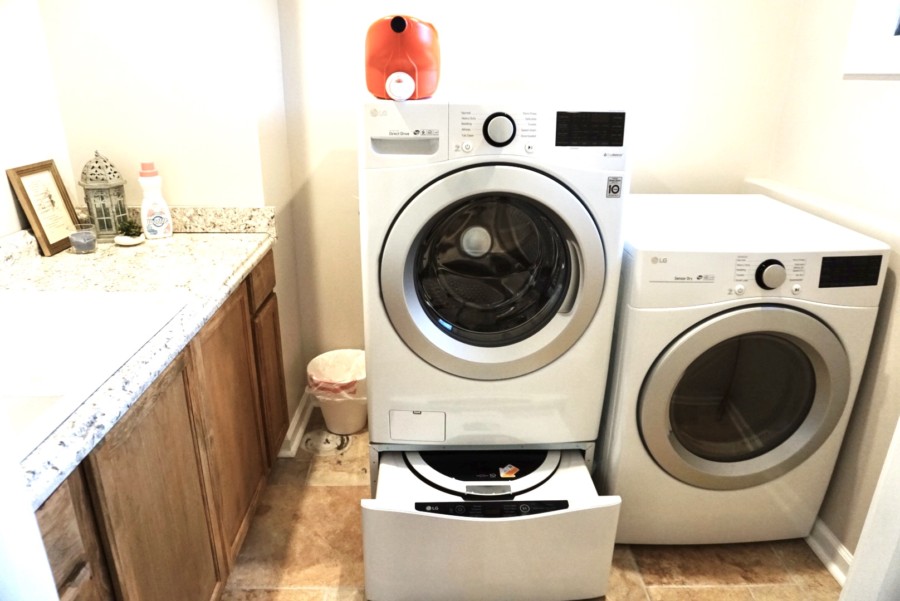
In general, you should be able to machine wash your power mesh in cold water but there may be instances where you should hand wash your power mesh. It is recommended that you line dry your fabric to increase its longevity. However, you can tumble dry this fabric at a low temperature with a dryer sheet to avoid static. This type of fabric should not need to be ironed unless it wrinkles or dry cleaned.
Step 2: How to Transfer Your Pattern onto Power Mesh Fabric
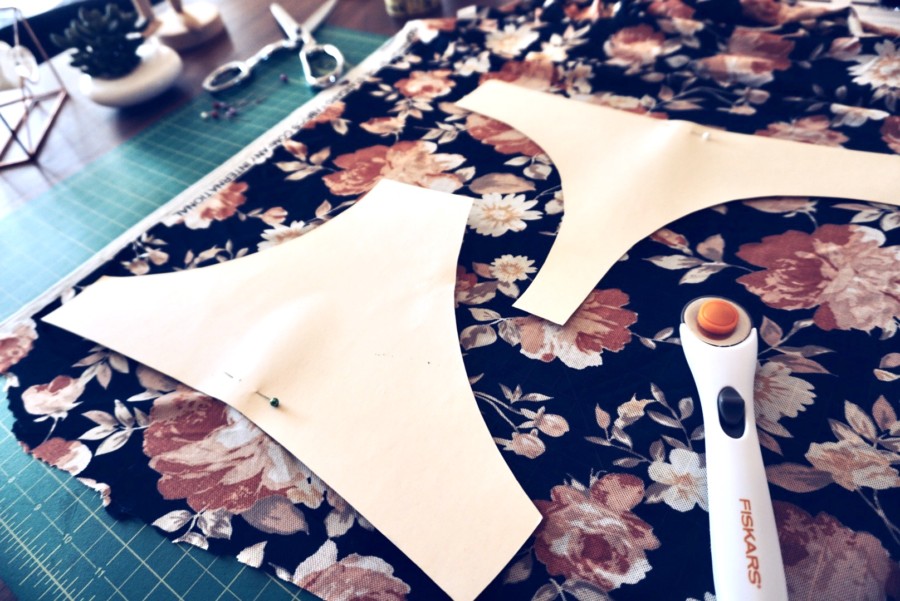
Transferring your paper pattern onto power mesh fabric can be tricky. There are a few techniques that are useful. Use the one that works best for you.
Technique 1: Lay your fabric on a self-healing cutting mat. Use silks pins or ultra-fine glass head pins to pin your paper pattern to your power mesh fabric.
Technique 2: Lay your power mesh fabric on your cutting table. Use a fabric pen that is safe for power mesh fabric and trace the pattern. Be sure to test the fabric pen on a scrap of fabric first to make sure the ink will come out.
Technique 3: Lay your fabric on your cutting table. Use tailor’s chalk to trace your pattern. Be sure to test your chalk on a scrap of fabric first. Tailor’s chalk usually melts away once you press the fabric.
Technique 4: Lay out a piece of white tissue paper on a self-healing cutting mat then lay your fabric out on top. Be sure to use white tissue paper to avoid transferring dye from colored tissue paper. Lay your pattern out and use pattern weights to support your pattern. Hold the pattern down with weights and your fingers when cutting.
Step 3: How to Cut Your Power Mesh Fabric
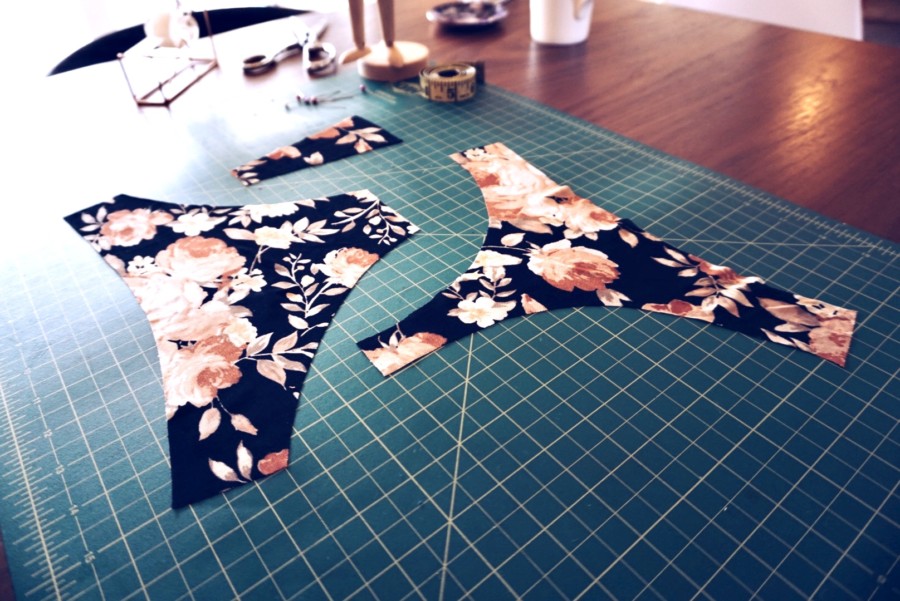
Use a self healing mat and rotary cutter to cut out your power mesh fabric. This will be the most precise cut as it allows the fabric to stay in place. Using a fabric scissor is likely to distort the fabric as power mesh can be slippery.
Never cut two layers of power mesh at once as the fabric will slip and distort your pattern. If your pattern instructs you to cut on the fold be sure to trace out the full pattern so that you do not have to cut on the fold. You want to avoid the fabric slipping which can easily happen if you are cutting on the fold.
Need a rotary cutter and self-healing mat recommendation? Try these using these affiliate links: Rotary Cutter and Self-Healing Cutting Mat.
Step 4: How to Press Your Power Mesh Fabric
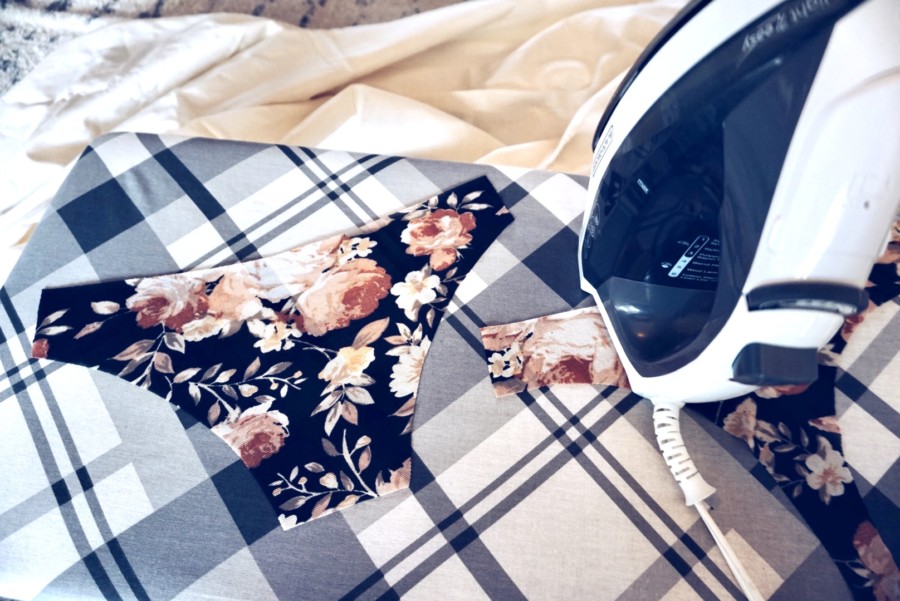
If needed, you can iron your power mesh fabric. Power mesh fabric is a synthetic fabric so it is important to press your fabric on a low setting such as a polyester setting. The use of a pressing cloth is optional.
Step 5: How to Prepare Your Sewing Machine to Sew Power Mesh Fabric
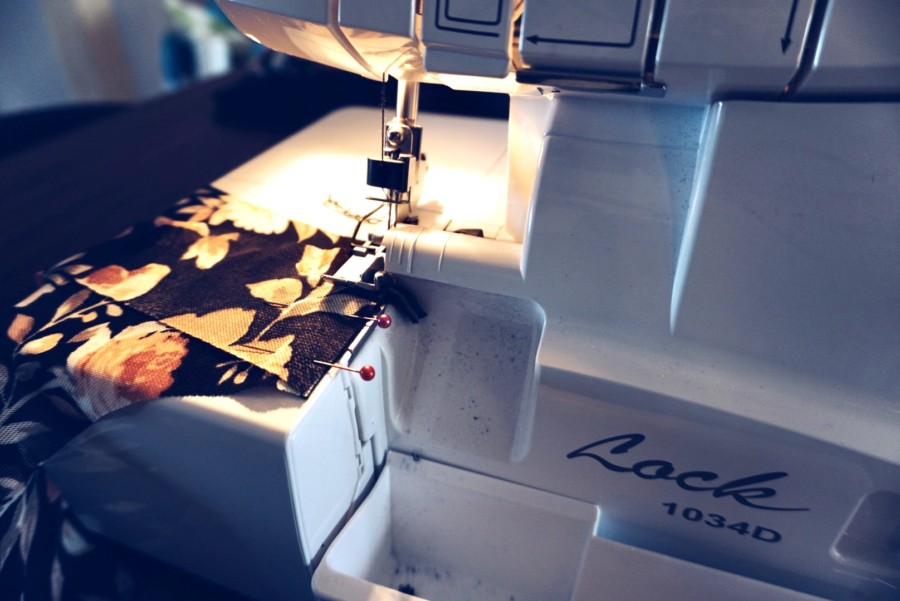
Power mesh is a very stretchy fabric. Ideally you would use a ball-point machine needle and a 3-step zig-zag stitch on a standard home sewing machine. You can also use an overlock machine on side seams. Polyester thread is also highly recommended when sewing with any type of stretchy fabric. It is also recommended that you loosen the presser foot pressure slightly on your home sewing machine to avoid any unnecessary stretch while sewing that could warp your stitch or seam.
Step 6: How to Sew Power Mesh Fabric on a Sewing Machine or Serger
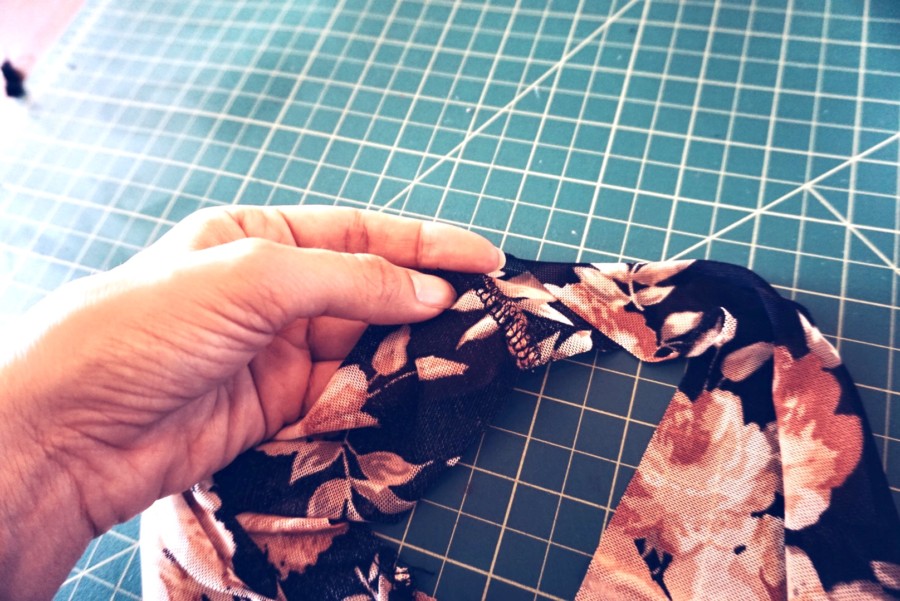
Match your power mesh fabric pieces together with silk pins, ultra-fine glass head pins or mini binder clips.
Begin sewing on a regular home sewing machine or serger at a slow and steady pace while pausing often to make sure the fabric is not bunching or getting caught. You want to be very careful to avoid snags and puckering.
Check out my recommendations on pins, machine needles and polyester thread using these affiliate links.
Looking for sewing machine recommendations? Check out my Recommended Sewing Machines page.
Step 7: How to Finish Your Seams and Hems
If you used a regular home sewing machine for your power mesh fabric you can finish your seams using your serger. You can do this before you begin constructing your garment or you can serge the two raw edges together after. Need a twin needle? Check out this affiliate link.
If your garment has a hemline you can leave it unfinished or use a twin needle. Fold the hem in to your desired amount and sew around the hem using your twin needle on your regular home sewing machine.
In this example, we used power mesh fabric for a pair of underwear and finished the seams using a serged seam then used picot elastic on the edges.
Tips & Tricks – How to Sew Power Mesh:
- If your garment is solely made from power mesh use a third layer of power mesh as interfacing if you do not want a see-through look.
- Power mesh comes in varying weights which means it has different compression effects. If you are using a heavier power mesh then be sure to size up your pattern so it will still fit you well.
- Use power mesh fabric to reinforce other mesh garments. This fabric is often used as lining or foundation fabric so it is great to stabilize other fabrics and it is easy to find in nude colors.
Where Can I Find Power Mesh Fabric?
Check out my recommendations for Power Mesh Fabric on my Recommended Fabrics Page.
If you want to explore more online retailers that carry power mesh fabric check out my article on the 18 Must Have Bra Making Supplies and scroll down to Power Mesh Fabric. I have a detailed list of online retailers across the globe that carry power mesh fabric.
Conclusion – How to Sew Power Mesh:
Hope you found this guide on how to sew power mesh fabric very helpful! Power mesh can be used for a variety of garments but it is perfect for lingerie and activewear. Feel free to experiment with this fabric and create awesome lingerie pieces!
Happy sewing!

